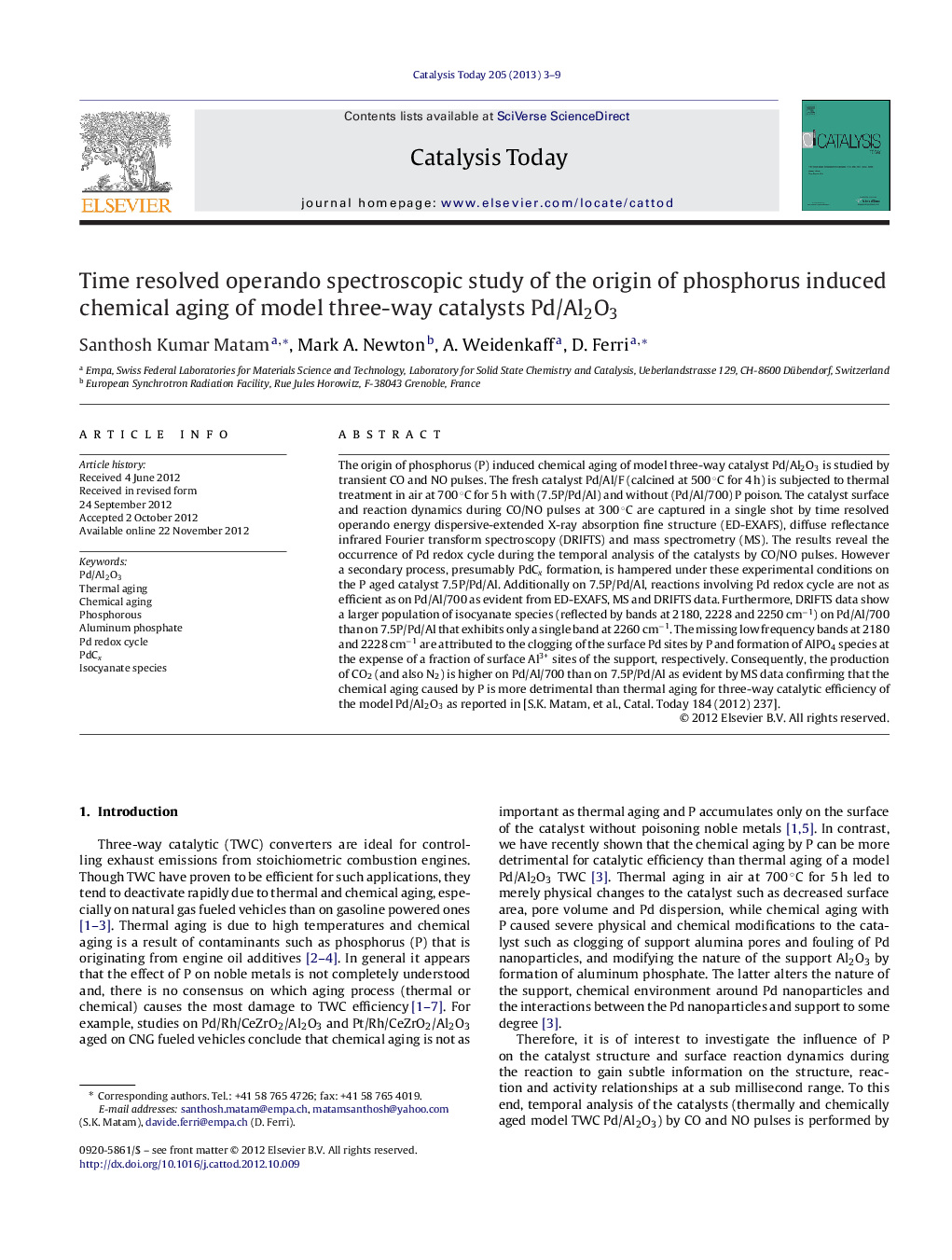| Article ID | Journal | Published Year | Pages | File Type |
|---|---|---|---|---|
| 54922 | Catalysis Today | 2013 | 7 Pages |
The origin of phosphorus (P) induced chemical aging of model three-way catalyst Pd/Al2O3 is studied by transient CO and NO pulses. The fresh catalyst Pd/Al/F (calcined at 500 °C for 4 h) is subjected to thermal treatment in air at 700 °C for 5 h with (7.5P/Pd/Al) and without (Pd/Al/700) P poison. The catalyst surface and reaction dynamics during CO/NO pulses at 300 °C are captured in a single shot by time resolved operando energy dispersive-extended X-ray absorption fine structure (ED-EXAFS), diffuse reflectance infrared Fourier transform spectroscopy (DRIFTS) and mass spectrometry (MS). The results reveal the occurrence of Pd redox cycle during the temporal analysis of the catalysts by CO/NO pulses. However a secondary process, presumably PdCx formation, is hampered under these experimental conditions on the P aged catalyst 7.5P/Pd/Al. Additionally on 7.5P/Pd/Al, reactions involving Pd redox cycle are not as efficient as on Pd/Al/700 as evident from ED-EXAFS, MS and DRIFTS data. Furthermore, DRIFTS data show a larger population of isocyanate species (reflected by bands at 2180, 2228 and 2250 cm−1) on Pd/Al/700 than on 7.5P/Pd/Al that exhibits only a single band at 2260 cm−1. The missing low frequency bands at 2180 and 2228 cm−1 are attributed to the clogging of the surface Pd sites by P and formation of AlPO4 species at the expense of a fraction of surface Al3+ sites of the support, respectively. Consequently, the production of CO2 (and also N2) is higher on Pd/Al/700 than on 7.5P/Pd/Al as evident by MS data confirming that the chemical aging caused by P is more detrimental than thermal aging for three-way catalytic efficiency of the model Pd/Al2O3 as reported in [S.K. Matam, et al., Catal. Today 184 (2012) 237].
Graphical abstractThe chemical aging caused by phosphorous retards the efficiency of Pd redox cycle involved reactions and the stabilization of active reaction intermediates by interacting with Pd nanoparticles and support alumina. This in turn, as compared to thermal aging, diminishes the three-way catalytic efficiency.Figure optionsDownload full-size imageDownload high-quality image (261 K)Download as PowerPoint slideHighlights► Phosphorous (P) reacts with support alumina and forms amorphous AlPO4 and clogs the surface Pd sites to some degree. ► Chemical aging caused by P retards the stabilization of adsorbed surface species. ► Chemical aging diminishes the efficiency of Pd redox cycle involved reactions.
